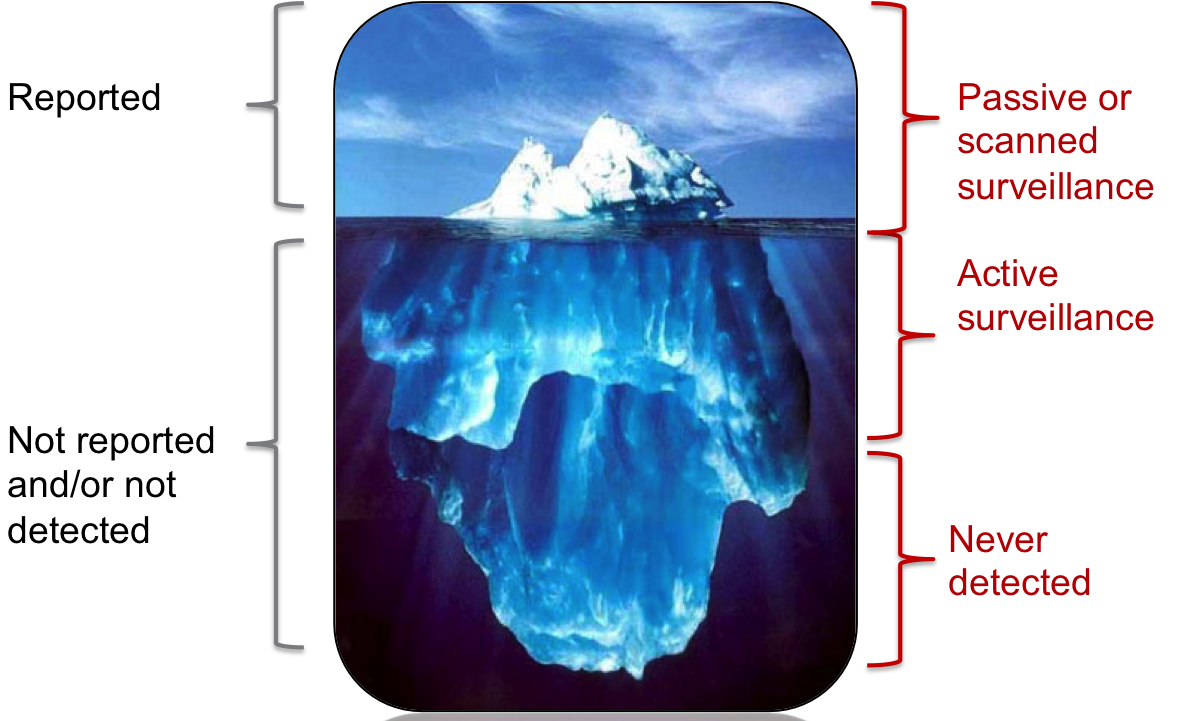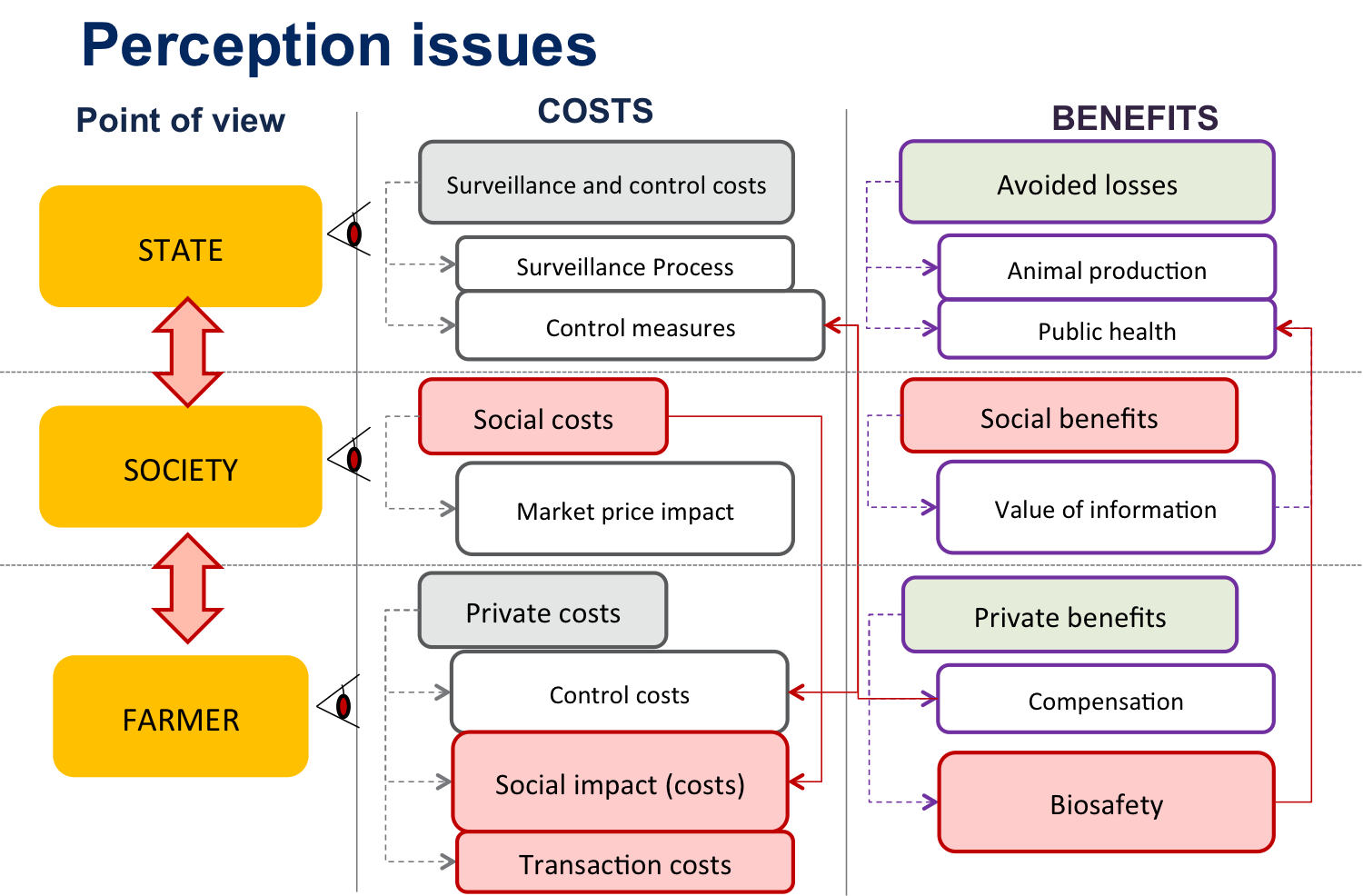This page has been developed by M. Peyre, CIRAD-AGIRs
1. Why do we do surveillance?
We do surveillance to
- To detect disease emergence and inform early reaction (EARLY DETECTION);
- to document freedom from disease status (FREEDOM from DISEASE),
- To detect disease cases to implement control measure (CASE DETECTION)
- To measure prevalence to assess effectiveness of control strategies (MEASURING PREVALENCE)
- To monitor virus evolution and adapt strategies (MONITORING EVOLUTION)

Most of the disease cases are not reported or not detected (cf the iceberg model)
- Passive surveillance represents the part of the cases which are detected and reported;
- Active surveillance allows detecting more cases.

2. What Evaluation can do?
The evaluation of animal health surveillance will allow to identify the actions required to improve
the system (either passive or active components or both) and increase the number of cases detected and report.
Of course a part of non-detected cases will always remain.
2.3. Surveillance: a complex system. The need for interdisciplinarity approaches.
In practice surveillance systems are complex systems which are influenced by many drivers, not only linked to epidemiological issues but also economical, social and political.
 Figure 2. Perception issues between the different level of actors involved in animal disease surveillance system and related costs and benefits involved.
Figure 2. Perception issues between the different level of actors involved in animal disease surveillance system and related costs and benefits involved.
The perception of the cost and benefits involved in animal health disease management process (including surveillance and control) will be different according to the different point of views. It is important in the evaluation process to identify clearly the point of view taken. When looking at the farmer and society it is also important to understand that surveillance involves specific costs and benefits which are often not accounted for (highlighted in Red in Figure 2).
This is mostly due to the fact that until recently there has been a lack of adapted methodology and a limited consideration of economic evaluation within the animal health surveillance evaluation process.
RISKSUR project aimed at addressing those two issues by developing an integrated framework for economic evaluation of surveillance (Calba et al., 2015); including specific methods to assess social costs and benefits of surveillance (Delabouglise et al., 2015; Pham et al., 2016).